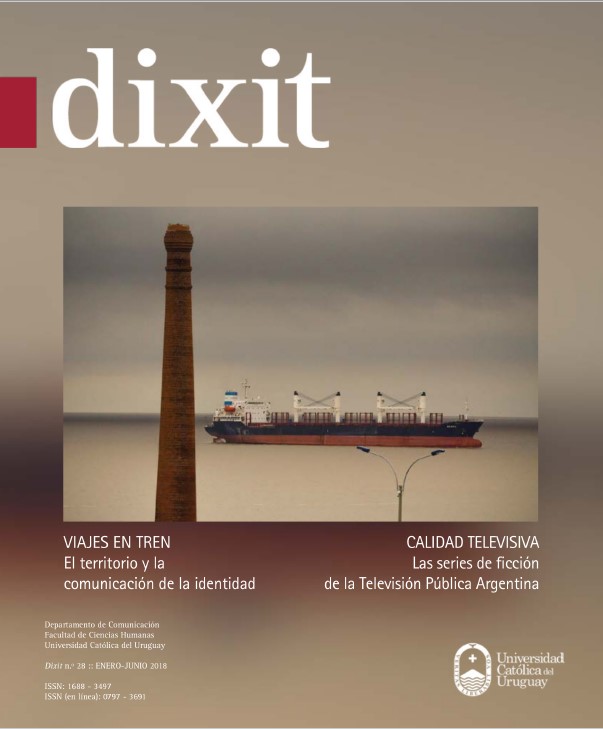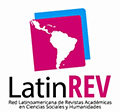Análisis y risa; orden y aventura: un recorrido por la obra de Umberto Eco
Reseña del libro Umberto Eco. Tra Ordine e Avventura, de Claudio Paolucci
DOI:
https://doi.org/10.22235/d.v0i28.1583Palabras clave:
semiótica, Umberto Eco, cartografía del saber, enciclopedia, teoría de la culturaResumen
En la presente reseña se identifican los principales argumentos, recorridos teóricos y matices de pensamiento de Umberto Eco tal como Claudio Paolucci, su principal continuador teórico, los recoge en su libro homenaje de reciente edición en lengua italiana. La reseña busca, por un lado, destacar el valor del libro al resumir tan compleja obra en algunos ejes claros y, por otro, a partir de una mirada crítica, discutir el valor central que Paolucci le asigna a la risa como mecanismo de caída de la alta cultura.
Descargas
Citas
Cogo, M. (2010). Fenomenologia di Umberto Eco. Bolonia, Italia: Baskerville.
Eco, U. (1988). Tratado de Semiótica General. Barcelona, España: Lumen.
Eco, U. (1997). Kant y el ornitorrinco. Barcelona, España: Lumen.
Eco, U. (2016), Diario Minimo. Milán, Italia: Bompiani (Trabajo original publicado en 1975)
Lorusso, A. M. (2008). Umberto Eco: temi, problemi e percorsi semiotici. Roma, Italia: Carocci.
Paolucci, C. (2010). Strutturalismo e interpretazione. Milán, Italia: Bompiani.
Paolucci, C. (2017). Umberto Eco. Tra Ordine e Avventura. Milán, Italia: Feltrinelli.
Scolari, C. (20 de febrero de 2016). Umberto Eco, el hombre que sabía todo. Una lista [Entrada en un blog]. Recuperado de https://hipermediaciones.com/2016/02/20/umberto-eco-el-hombre-que-sabia-todo-una-lista/
Sedda, F. (7 de abril de 2016). L’essere e l’enciclopedia. Forme del realism e della cultura nell’opera semiotica di Umberto Eco. E/C. Rivista digitale dell’Associazione Italiana di Studi Semiotici. Recuperado de http://www.academia.edu/24161429/Lessere_e_lenciclopedia._Forme_del_realismo_e_della_cultura_nellopera_semiotica_di_Umberto_Eco
Sperber, D., y Wilson, D. (1995). Relevance: Communication and Cognition. Oxford, Reino Unido: Blackwell.
Traini, S. (2013). Media and Mass Communication in the Works of Umberto Eco. E/C. Rivista digitale dell’Associazione Italiana di Studi Semiotici. Recuperado de http://www.ec-aiss.it/includes/tng/pub/tNG_download4.php?recordID=687&KT_download1=e649dbe0bb8d2337d270ab929585533f
Thellefsen, T., y Sørensen, B. (Eds.). (2017). Umberto Eco In His Own Words. Boston, MA: De Gruyer Mouton.
Trainito, M. (2011). Umberto Eco: Odissea nella biblioteca di Babele. Saonara, Italia: Il Prato.
Descargas
Publicado
Cómo citar
Número
Sección
Licencia
Desde el n.º 32 en adelante todos los contenidos se encuentran bajo la Licencia Creative Commons Atribución 4.0 Internacional (CC BY 4.0).
Las ediciones número 29-31 se encuentran bajo la Licencia Creative Commons Atribución-NoComercial 4.0 Internacional.
Los contenidos correspondientes a los números 28 y anteriores se encuentran bajo la Licencia Creative Commons Atribución-NoComercial-CompartirIgual 4.0 Internacional.


















